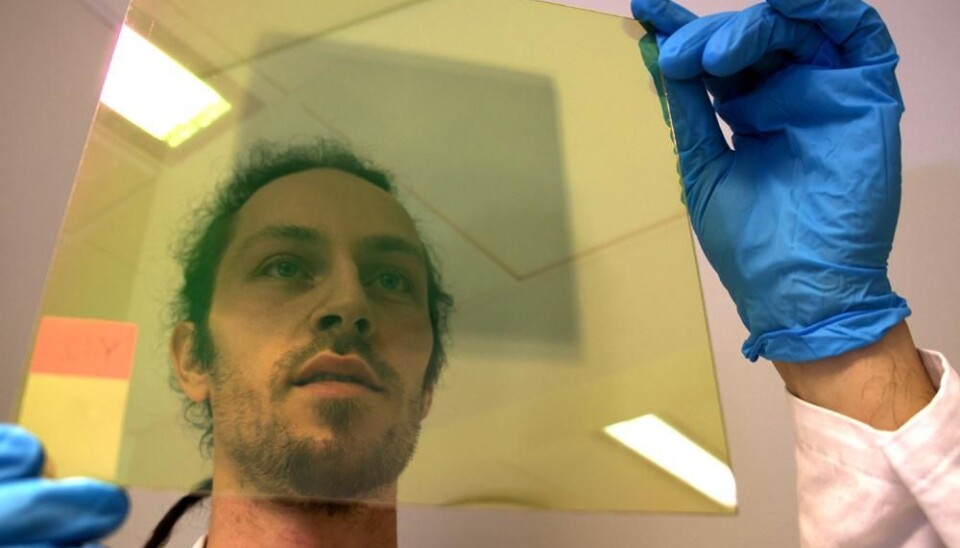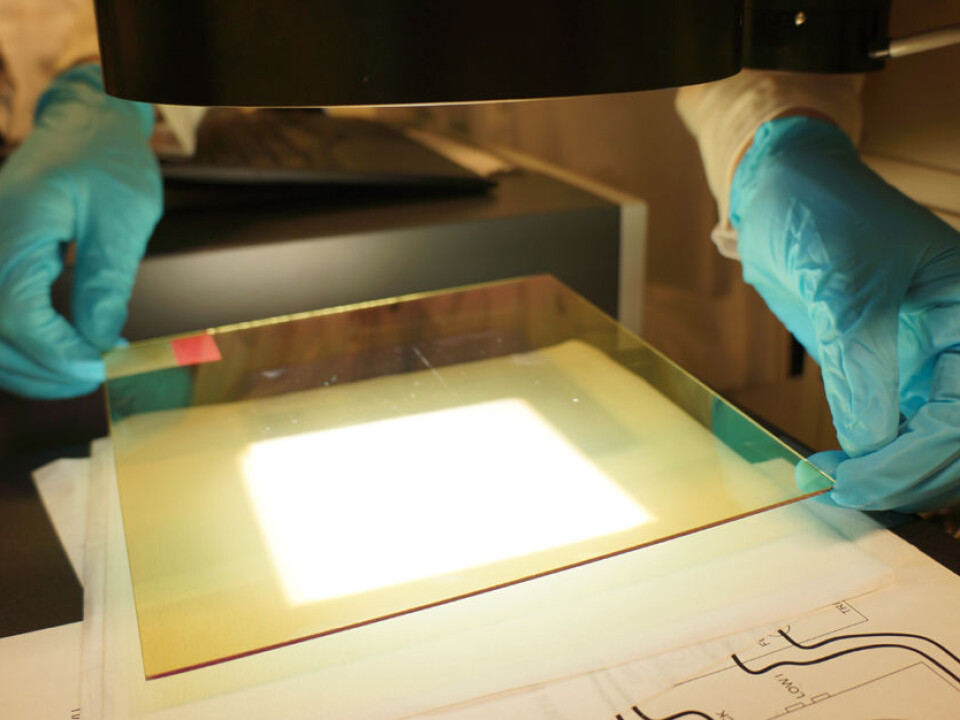
A murky glass mystery
Discovered by accident, it's useful as a window coating. When the sun shines, this compound gets darker. But why? Scientists have yet to find out.
Denne artikkelen er over ti år gammel og kan inneholde utdatert informasjon.
Researcher Trygve Mongstad holds up a sheet of glass that has a darker square at its centre. This area has been exposed to a source of light, a so-called sun simulator, in a lab at the Institute for Energy Technology (IFE).
The glass hasn’t grown darker. What it has is a thin film of metal hydride. Mongstad and his colleagues have actually studied this material for completely different reasons.
The scientists were originally trying to utilise metal hydrides to make a new type of cheaper and more effective solar cells, but instead they discovered by chance that these materials can have other exciting characteristics.
Serendipity
“If we didn’t have a laboratory where we conducted research on ways that light impacts materials and solar cells, it’s unlikely we would have discovered that metal hydrides get darker by exposure to light,” says Mongstad.

Of course this isn’t the first time basic research has given unexpected results with vast potential applications.
A prime example is how Wilhelm Röntgen chanced upon the way mysterious x-rays passed through the human body and could be used to take pictures of our skeletons.
Blocks all colours
Very few materials have this special characteristic. Often high pressure and low temperatures are needed to achieve this phenomenon. Metal hydrides get darker even at room temperatures.
This means they are feasibly more stable than substances used, for instance in photochromic sunglasses, that have lenses which darken when exposed to sunlight.
This makes the compounds usable for window glass which could retain its properties for years and years, according to Mongstad.
The materials now used in sunglasses also have a colour tone. Many different materials with sensitivity to different colour tones are combined in these sunglasses so that they darken all the colours in what we perceive as white sunlight.
Metal hydrides, on the other hand, become an even grey. They block all colours, including infrared rays. This makes them even better for regulating the temperature indoors on hot and sunny summer days.
Mystical mechanism
"The fact that they are neutral in colour makes us think another mechanism is at work in metal hydrides than in comparable materials,” says the researcher.
In saying this he discloses something that makes the material even more exciting, especially for researchers who make a living off charting the unknown: Nobody knows yet for sure why metal hydrides get darker.
Mongstad and the other scientists suspect that it is an electronic effect.
Electronic shades and e-paper
If this proves correct, metal hydrides could possibly be made to darken by subjecting it to an electric current.
This could enable the scientists at IFE to create electrically powered windows that dim without shutters or shades. But that’s not all.
They can also experiment with the chemical contents of the metal hydrides. This could yield materials that react quickly or retain the dark shade longer.
“The latter could possibly be used to create displays that run on little electricity, so-called e-paper, such as used in e-books and tablets like Kindles,” says Trygve Mongstad.
--------------------------------------------
Read this article in Norwegian at forskning.no
Translated by: Glenn Ostling































